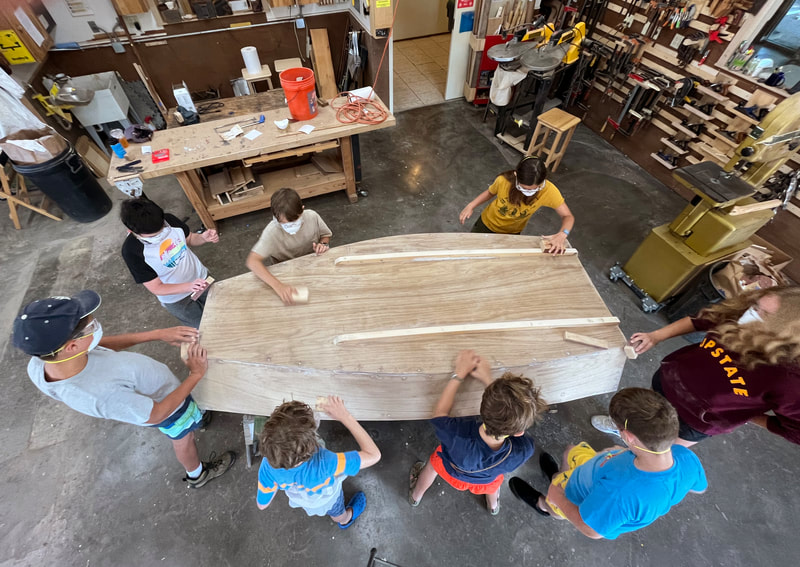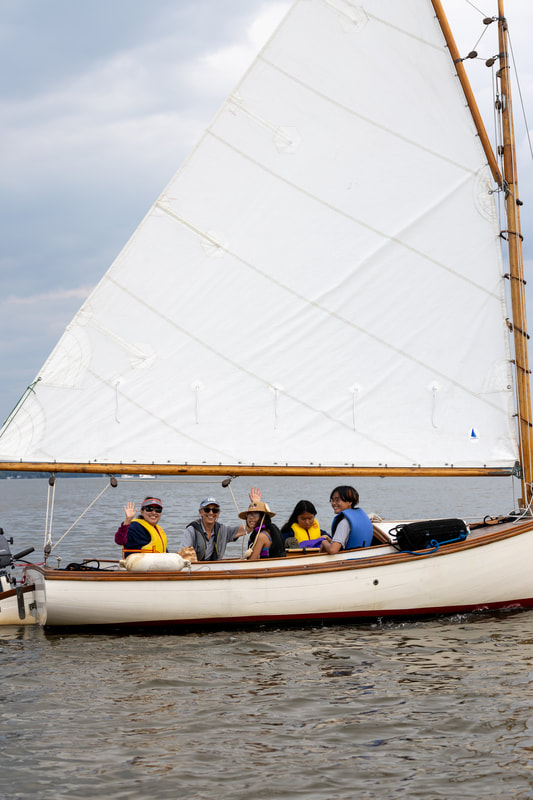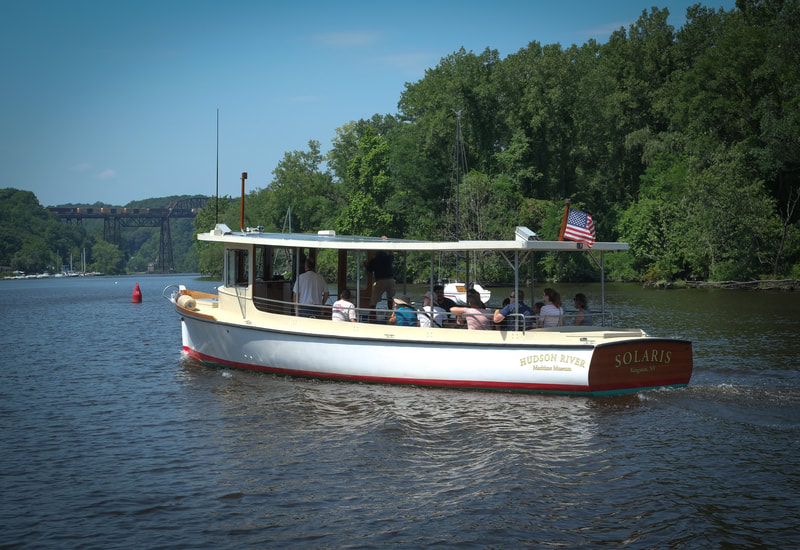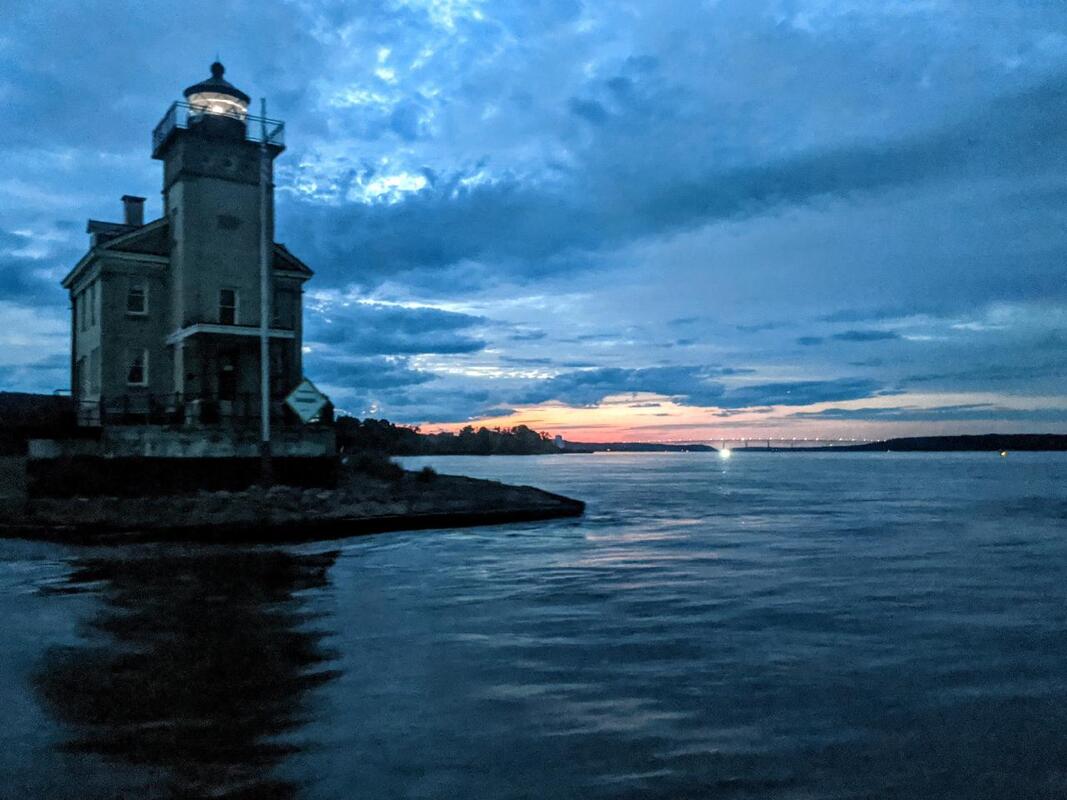Photo by Rachel Snydstrup
Mission & Vision
The Hudson River Maritime Museum (HRMM) was established in 1979 and preserves, interprets, and celebrates the maritime history, traditions, industries, and communities of the Hudson River and its tributaries.
HRMM connects people to the Hudson River and its watershed through education and preservation of the river’s maritime history and environment.
Click here to view the staff list.
HRMM connects people to the Hudson River and its watershed through education and preservation of the river’s maritime history and environment.
- HRMM seeks to empower the public to understand the value of their own stories, and how the connection between the past and present can ultimately shape the future.
- Using traditional education methods as well as hands-on learning, we will engage diverse audiences in programs that focus on our shared history and we will explore how science informs our everyday life.
- In partnership with the local and global community, HRMM will continue to grow as a cultural and tourism hub and serve as a thought leader in modeling a resilient, sustainable, and inclusive waterfront.
Click here to view the staff list.
The Hudson River Maritime Museum is located on the Rondout Creek, part of Lenapehoking – traditional home of the Lenape. We recognize the painful history of forced removal, dispossession, cultural suppression, and genocide of Indigenous peoples. By collaborating with present day Lenape communities, culture bearers and scholars we are actively working to improve our exhibits, public programs, and educational resources, and help everyone better understand this important history.
We’re more than a traditional museum!
HRMM is a multi-functioning education hub and dynamic working waterfront. that includes an extensive collection of maritime artifacts and historic vessels, the Wooden Boat School, a Sailing School, a marina with public docking, a solar-powered tour boat, Solaris Boat Tours, and homeport barn—a public events space. Additionally, the museum operates the Rondout Lighthouse— the last of three lighthouses marking the entrance to the Rondout Creek—accessible only via our guided boat tours.
HRMM shares its knowledge, research, and collections through year-round programming that fosters environmental stewardship and enjoyment of the river. We welcome more than 30,000 people of all ages and abilities annually to exhibits, public events, school field trips, on-the-water activities like sailing classes, boat tours, woodworking, furniture making, boat building, and more.
HRMM shares its knowledge, research, and collections through year-round programming that fosters environmental stewardship and enjoyment of the river. We welcome more than 30,000 people of all ages and abilities annually to exhibits, public events, school field trips, on-the-water activities like sailing classes, boat tours, woodworking, furniture making, boat building, and more.
The museum's collection contains more than a million artefacts representing the extensive maritime heritage of the Hudson River and encompasses industries such as ice harvesting, brick making, boat building, blue stone quarrying, cement making, coal transport, and crushed stone. This includes historic vessels, objects, archival material and art related to Hudson River transportation, industries and recreation such as paintings, prints, photographs, ephemera, blueprints, artifacts, ship models, a 100-year old shad boat, life boats, lighthouse tender, and ice yachts. Additionally, the steam era of transportation, which stimulated the growth of these various industries on the Hudson River, is emphasized, and the 19th and 20th centuries are the primary time periods interpreted
Owned by the City of Kingston and operated by the Hudson River Maritime Museum, the Rondout Lighthouse is one of only seven remaining on the Hudson River. Completed and lit in 1915, the brick lighthouse is still fully operational as a navigational light. Guided tours with the museum's docents of the interior of the lighthouse are available seasonally.
Water Acknowledgement
For over ten thousand years, Indigenous people including Lenape, (Munsee and Unami) and Mohican have lived along the shores of the Mahicanituk, now known as the Hudson River. The Mahicanituk (Muh-he-kun-ne-tuk), a Lenape/Mohican word which roughly translates to “the river that flows two ways” or “the waters that are never still,” gave water and life through its rich estuarine resources, aiding in transportation and connecting different peoples. The Lenape and Mohican were dispossessed of their lands and forcibly removed to places far from their homes. The Hudson River Maritime Museum is located on Rondout Creek, part of Lenapehoking – traditional home and territory of the Lenape people - and recognizes this painful history of removal, dispossession, cultural suppression, and genocide. We specifically acknowledge the harmful role that many museums participated in, with inaccurate depictions of Indigenous peoples, erasure of traditional knowledge, and mismanagement of their sacred and cultural belongings. By collaborating with present day Lenape communities, culture bearers, and scholars, we seek to improve our exhibits, public programs, and educational resources, and help everyone better understand this vitally important history. Today Lenape live in thriving communities across the country with sovereign Nations located in Oklahoma, Wisconsin and Canada. As a point of public access to the river, the Hudson River Maritime Museum is committed to providing access to the members of the dispossessed Nations of the Hudson River Valley to experience their ancestral homeland along the river that gives life. The Hudson River Maritime Museum is pleased to share and hold in trust for future generations the history of Mahicanituk, the river that flows two ways.
History
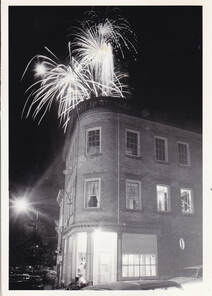 The original location of HRMM on Broadway. The museum moved to its present location in 1983, the same year it acquired the steam tugboat Mathilda.
The original location of HRMM on Broadway. The museum moved to its present location in 1983, the same year it acquired the steam tugboat Mathilda.
The Hudson River Maritime Museum was founded in 1979 by steamboat and tugboat veterans who had spent their working lives on the river, as well as local citizens who wanted to preserve the shipping history of the Hudson River. By 1980, the museum had opened its first exhibit.
Originally located in a storefront on the corner of Spring Street and Broadway, the museum moved down to the former Miron Lumber Company offices on what was then East Strand Street along the Rondout Creek in 1983, the same year it acquired the historic 1898 steam tugboat Mathilda, which sits in the museum yard.
In 2012, the museum partnered with Clearwater to build the Kingston Home Port and Education Center, also known as "The Barn", on the west end of the museum's property to serve as a winter Home Port for Clearwater and summer program and event space for the museum. In 2015, the museum purchased the former Rosita's Restaurant property (just east of the museum) and transformed it into the Wooden Boat School. In August, 2017, the Sailing & Rowing School offered its first youth sailing program, with one week of youth and one week of teen sailing instruction on the museum's fleet of 19' Lightnings. It has quickly expanded to include adult and youth sailing programs. Today, the museum features annual exhibits, free public events, educational programs for adults and children alike, continually updated and improved by both staff and volunteers.
Originally located in a storefront on the corner of Spring Street and Broadway, the museum moved down to the former Miron Lumber Company offices on what was then East Strand Street along the Rondout Creek in 1983, the same year it acquired the historic 1898 steam tugboat Mathilda, which sits in the museum yard.
In 2012, the museum partnered with Clearwater to build the Kingston Home Port and Education Center, also known as "The Barn", on the west end of the museum's property to serve as a winter Home Port for Clearwater and summer program and event space for the museum. In 2015, the museum purchased the former Rosita's Restaurant property (just east of the museum) and transformed it into the Wooden Boat School. In August, 2017, the Sailing & Rowing School offered its first youth sailing program, with one week of youth and one week of teen sailing instruction on the museum's fleet of 19' Lightnings. It has quickly expanded to include adult and youth sailing programs. Today, the museum features annual exhibits, free public events, educational programs for adults and children alike, continually updated and improved by both staff and volunteers.
|
GET IN TOUCH
Hudson River Maritime Museum
50 Rondout Landing Kingston, NY 12401 845-338-0071 [email protected] Contact Us |
GET INVOLVED |
stay connected |
Proudly powered by Weebly

